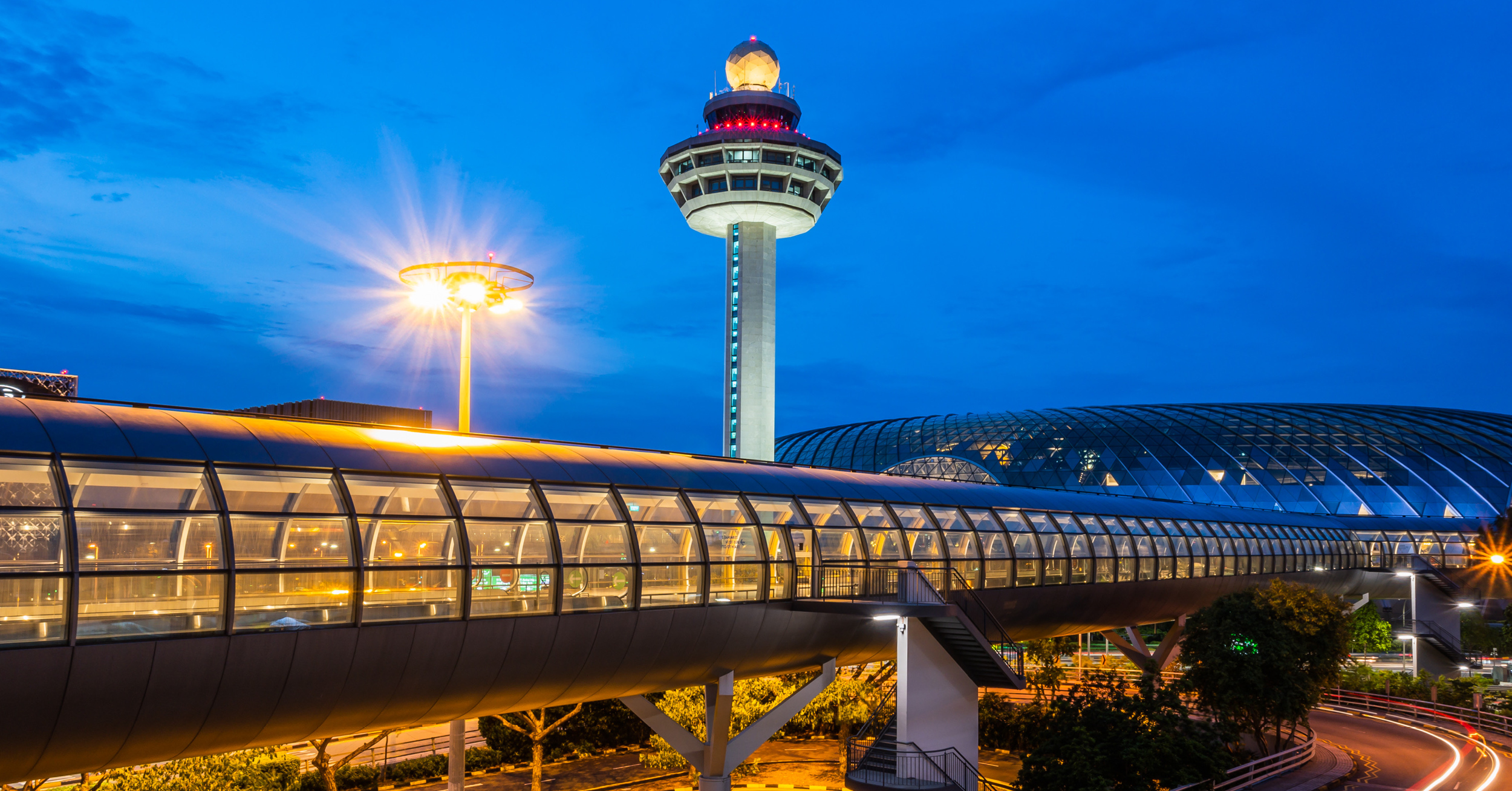Through turbulence to our destination

Farhan Guliyev, Director of AZANS, explores lesson’s learned from COVID-19, and the solutions and requirements for restart and recovery.
Turbulence is one of the most unpredictable phenomena in aviation and something we could liken to the situation with the COVID-19 pandemic for aviation. COVID-19 suddenly created chaos in the daily lives of all humanity worldwide, without acknowledging borders and nations. It has impacted all industries, all sectors and all aspects of our lives with devastating economic and financial losses and significant uncertainties.
The spread of COVID-19 has significantly affected the global aviation community and our industry has faced the biggest challenge in its history. The sudden cancellation of international and domestic flights across the globe, travel restrictions and lockdowns of affected areas to prevent the spread of the virus put the whole of aviation into an unprecedented crisis that resulted in an almost 90% rapid decline in air traffic.
“It never rains but it pours”, is a proverb on top of the minds of aviation industry professionals, as this economic sector has been hit particularly hard by the crisis. All possible aspects: financial, operational, managerial, technological, even mental health have been affected. The dramatic financial impact affected our whole aviation family, passenger airlines, cargo airlines, aircraft manufacturing companies, ATM suppliers, airports, ANSPs, and catering and other service providing companies. We all need to find a balanced solution and to think about airspace users.
In most of our endeavors, we are interdependent. One individual cannot succeed without the cooperation of others. We cooperate at many different scales – local, regional and national. The COVID-19 pandemic highlights the danger of ignoring our interdependence and the importance of global cooperation. It shows us with crystal clarity that all of humanity is in the same boat. Since the virus can be defeated somewhere only when it is defeated everywhere, it shows us the terrible folly of pretending that we can achieve security in isolation, within the borders of our nation, culture, class or religion.
Making a parallel with the severe turbulence that requires a well-coordinated interaction between the pilot and air traffic controller to handle it safely, the ongoing situation with COVID-19 requires joint efforts and strong cooperation between international organizations and all industry players.
International organizations such as ICAO, IATA, ACI, CANSO, EUROCONTROL, A4E, and EASA, set the tone in this dramatic situation by starting dialogue with all stakeholders and governments, helping to address critical issues and coordinating efforts of all players in the most efficient manner. They are leading this process and playing a key role in the revival of the global aviation community.
“The only way the aviation industry can successfully navigate through these difficult times is if we all work together to ensure that aviation remains the safest and most efficient mode of transport,” CANSO Director General, Simon Hocquard says. CANSO played an important global role in this coordination process and undertook prompt actions for ANSPs in this unprecedented complex situation. It is obvious that those courageous and well-orchestrated efforts of CANSO in finding balanced solutions to resolve this dramatic situation, such as developing manuals, managing regional crisis situations and raising awareness among key stakeholders successfully allowed to put things in proper order and to address the existing critical issues in the most efficient manner.
It is also obvious that those challenges we currently face in terms of contingency and operational planning would benefit from strong coordination between industry and states. We should also understand the importance of investments and respective government support not only to recover from the crisis impact, but also to support the infrastructure for sustainable safe operations in the future.
The role of the ANSP in global aviation performance in this situation proved to be vital. Whilst our airline customers were heavily hit by the crisis, with some of them fighting for survival in difficult times, air navigation service providers (ANSPs) are also experiencing severe consequences. One of the main objectives of ANSPs is to preserve the business continuity of the air transport industry. ANSPs are playing a vital role in the aviation system, without ANSPs the existence and survival of the global aviation sector is not possible.
Unlike the airlines, ANSP could not suspend operations – we need to provide continuous services to cargo delivering medical supplies and food, repatriation, humanitarian and emergency flights. And we need to continue providing safe services regardless of the drastic traffic decline, the financial losses which are perpetuated by delays in the payment of charges by airlines, and the traffic decline.
ANSPs are taking extraordinary measures to ensure the health of employees during this time in order to provide the maximum level of continuity in the provision of ANS and to maintain global connectivity by enhancing cleaning and disinfection protocols at its facilities, implementing “work from home” policies where feasible.
They are applying cost-cutting measures while covering operational and maintenance costs and trying to minimize job cuts and protecting the workforce, keeping operational and technical personnel trained and skilled to guarantee the maximum level of continuity in the provision of air navigation services to our users without jeopardizing the safety of flights and maintaining connectivity around the globe. All those actions taken by ANSPs make it possible to continue to provide a safe passage for air traffic during the COVID-19 impact.
In the current circumstance, we understand that due to negative economic impact there will be certain delays in delivery of planned projects and strategies. We shall be open and ready to revisit our strategies, to revise our priorities, to reconsider planned projects in order to properly align them and adapt to new realities and to find the balance between continuity of our businesses and new strategical goals.
We all aware of the difficult situation of businesses around the globe right now, and this is one more reason to help each other, remain reliable partners and give all of us the opportunity to restore our cooperation and partnerships in full.
Aviation is fundamental to the support and growth of local and global economies and an essential part of our world as travelers.
Global crises always call for the need of technical and innovation revolutions. And lessons learned from the situation with COVID-19 pandemic will encourage and even force us to implement new solutions and bring us to the next level of technological evolution. Most of us could recall the feelings that if we had implemented some technical features or installed some technologies in the past, it would be so helpful to us now during the pandemic. One good example is unmanned aerial vehicles (UAVs). If all of us had in place mature U-Space and UAS services and facilities, it would be dramatically helpful during the pandemic we are facing today.
Now we need to concentrate on emerging technologies and put all our efforts to accelerate the development of a new era of aviation technologies and supporting regulations. There is not much more we can do with physical characteristics of aircraft, there are no major changes to plane aerodynamics and their performance on the horizon. This brings us to the conclusion that only digital innovations could bring new benefits to flight performance and environmental protection.
Digital performance will be the future driver of the aviation industry in terms of safety, capacity and efficiency. Traffic will soon start to increase again and building coherent digital ecosystems among the main stakeholders is the way forward.
Digitalization of airspace and ATM will introduce powerful new tools that are greatly needed by aviation today. We could emphasize future trends and initiatives such as:
- Agile shift to the use of artificial intelligence and big data in ATM and through the whole aviation chain;
- AI platform development in partnership with international organizations (ICAO, IATA, CANSO, EUROCONTROL, EASA), ANSPs, airlines, airports, ground handling companies, etc. Partnership with IT giants such as Google, Facebook or Netflix to and adopt their huge experience and developed platforms to our needs;
- Machine learning will help us to understand the way to achieve and to successfully build mature ECO system. Using AI we can analyze customer experience, employee performance, perform post operational analysis with cooperation of ANSP, airports and airlines and develop tools starting from business intelligence applications to dynamic airspace management;
- Widely use Aireon space based ADS-B capacity to collect data and perform post analyses on global level.
- Launch of a global digital innovation hub to stream solutions, ideas, experiences from around the world to shape a single best opinion on AI implementation;
- Accelerated efforts in moving to cloud-based platforms for cooperation and decision-making uniting airports, ANSP, airlines, handling companies, thus creating smart cloud airports and ATM further developing the SWIM concept. This should be applied in a harmonized approach through regions with a reliable data exchange program, forecasting, more accurate traffic-load predictions, cross-border airspace and ATC systems management, remote ATC digital platforms , network management and adaptation of latest technologies for seamless operational planning.
- Virtual trainings and web based academies will spread in aviation industry and will be widely used. Trainings based on the use of virtual reality in ATC maintenance and ATC operations and the development and adoption of relevant training software will become a trend. Electronic certification, licensing, online consulting and auditing service platforms will be implemented in different formats;
- Accommodation of new entrants to the airspace users (from UTM to the commercial Space industry). Common U-Space Concepts should be developed, agreed and regulated to enable service provision by UAV. National UTM airspace adaptation phase shall come to the active phase, leading to UAS traffic management system integrated with ATC and accommodating general and operational air traffic (GAT/OAT) with integrated space control.
- We need to emphasize the importance of the critical digital communication systems. In order to move forward to the next level of digitalization, it is vitally important to establish reliable, cyber-resistant, common communication protocols and to build wide aeronautical network with data exchange and storage gates. This critical network infrastructure shall interconnect all involved aviation stakeholders from the ground to the air, enabling seamless access to the data and exchange. We also need to achieve the goal of bringing a common protocol different kind of aviation (commercial and operational) communication protocols and try to use an integrated protocol around the world (a mix of communication streams like AMHS, AFTN, PENS, SITA, Tematik, DLINK, IRIS, etc.). Having a common messenger could eliminate existing risks and enable advanced planning.
As after every major event, lessons will be learned from this crisis that will also cause a positive impact to our lives, helping us to develop new ways of thinking and comprehension and bringing a new breath of fresh air to the aviation industry.
It is obvious that close coordination and cooperation between international organizations and all key stakeholders is the main prerequisite for success. Almost every challenge in aviation requires a team effort to solve it. And we still have a long way forward to work together to smoothly bring back aviation industry back to normal life. Some of the existing regulations and requirements, showed their weakness and certain gaps. Our contingency and emergency response plans shall be properly revised in cooperation with all international aviation organizations and with active involvement of a wide range of non-aviation organizations. We need to strengthen and further enhance cooperation and partnership strategies with neighboring states, airports and airlines. We need to develop and successfully implement new partnerships and new operational models.
ANSPs, as well as other industry players, will adapt new technologies, implement new processes and will become more resilient and anti-fragile. Brainstorming, dialog, our joint efforts and effective cooperation with other industry players and respective governments will bring us to the next level of future aviation.
Global Industrial partnership, the development of agreed roadmaps for all actors within the aviation chain, focusing on changing the landscape of our future airspace, uniting our efforts, knowledge, experience and skills under the CANSO umbrella will bring us to a successful destination of achieving our goals through today’s turbulence.



